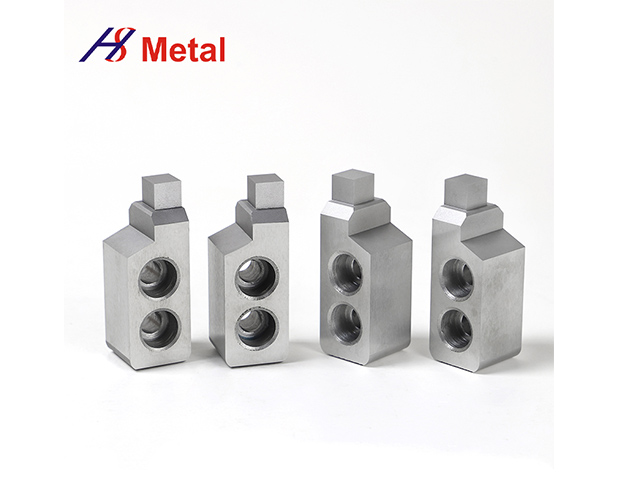Email:
sales@hypersolidmetal.comWhatsapp:
8615038522042
Email:
sales@hypersolidmetal.comWhatsapp:
8615038522042



| Physical Property | Value |
|---|---|
| Melting Point | 3,422°C (6,192°F) |
| Density | 19.3 g/cm³ |
| Tensile Strength | 550 – 900 MPa |
| Hardness (Vickers) | 250 – 400 HV |
| Young’s Modulus | 411 GPa |
| Coefficient of Thermal Expansion | 4.5 x 10^-6 /°C |
| Thermal Conductivity | 173 W/m·K |
1.High Melting Point: Tungsten electrodes have an exceptionally high melting point, reaching 3422°C (6192°F). This allows tungsten electrodes to maintain structural stability in extremely high-temperature environments, making them an ideal choice for high-temperature applications.
2.Excellent Electrical Conductivity: Tungsten electrodes exhibit outstanding electrical conductivity, making them excellent conductive materials. They have low resistance and high current-carrying capacity, enabling efficient conduction of electricity, suitable for high-power electronic devices and arc discharge processes.
3.Corrosion Resistance: Tungsten electrodes have good resistance to most chemical substances. They can operate stably for extended periods in acidic and alkaline environments, resisting corrosion and oxidation.
4.Mechanical Strength: Tungsten electrodes possess excellent mechanical strength and hardness, allowing them to withstand vibrations and stress while maintaining a stable shape. This enables tungsten electrodes to withstand high mechanical stress in various applications.
5.Longevity: Due to their high-temperature stability, corrosion resistance, and mechanical strength, tungsten electrodes typically have a long lifespan, reducing the frequency of replacement and maintenance.
6.Variety of Types: Tungsten electrodes offer different types to choose from based on specific application requirements, such as pure tungsten electrodes, tungsten-cobalt alloy electrodes, and tungsten-rhenium alloy electrodes. Each type has different characteristics and applications.

1.Arc Welding (TIG Welding): Tungsten electrodes are extensively used in TIG (Tungsten Inert Gas) welding. They serve as welding electrodes, generating a stable arc at high temperatures for joining and welding various metals such as stainless steel, aluminum, and titanium.
2.Spark Machining: Tungsten electrodes are used as the electrode component in the process of spark machining. Spark machining is a precision machining technique used for cutting, hole drilling, and surface treatment of metal materials, where tungsten electrodes are used to generate high-energy electrical discharge.
3.Vacuum Arc Melting: In vacuum arc melting, tungsten electrodes are employed to generate a high-temperature arc for melting metal materials. This process is commonly used for alloy preparation, metal refining, and recycling of scrap metals.
4.Electrolysis Processes: Due to their corrosion resistance and stability, tungsten electrodes are used as electrodes in electrolysis processes such as water electrolysis, electroplating, and electrochemical synthesis.
5.X-ray Tubes: Tungsten electrodes are used in the cathode part of X-ray tubes. The cathode emits electrons, producing X-rays used in medical imaging, material testing, and scientific research.
6.Nuclear Fusion Reactions: In nuclear fusion reaction devices, tungsten electrodes are used to withstand extreme conditions of high temperature and high energy. They are commonly utilized in the electrodes and limiters of fusion devices.
7.Space and Aerospace Applications: Due to the high melting point and high-temperature resistance of tungsten electrodes, they find extensive use in spacecraft and rocket thrusters for generating stable arcs and withstanding high-temperature environments.